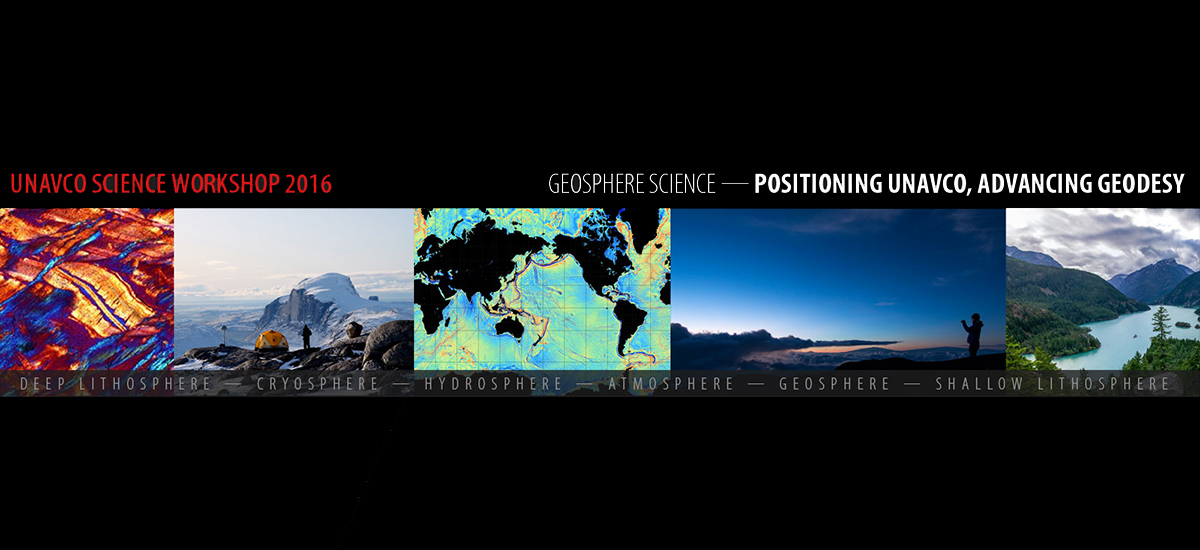By Beth Bartel and Linda Rowan, UNAVCO - Spring 2016
The UNAVCO Science Workshop featured innovative, significant advances in research and broader impacts utilizing the dense network of more than 1200 instruments in the EarthScope Plate Boundary Observatory (PBO). Over 190 participants gathered to discuss the latest advancements in geodetic sciences in Broomfield, Colorado from March 29–31, 2016. PBO was prominently featured in talks, posters, and discussions.
Lucy Flesh, of Purdue University, combined GPS motions from PBO in Alaska with seismic and geologic data from many sources to show that mantle convection drives extension and mountain building in northern and central Alaska and northwestern Canada, and is the likely driver of Bering plate motion.
Adrian Borsa, of Scripps Oceanographic Institute, demonstrated that PBO can be uniquely utilized as a hydrological monitor to measure water loads for research on the water cycle and for water resource management. Data from PBO has led the way to considering water loads captured in other geodetic networks around the world. Kristine Larson, of the University of Colorado, showed that reflections of the satellite signal off of a surface and into a GPS antenna can measure snow depth, soil moisture, tides and sea level, vegetation, glacier height and likely other parameters. These data expand the use of PBO beyond its solid-earth science intentions into snow and soil science, ecology, oceanography, glaciology, and other fields of research. In particular, the data complement and extend the spatial and temporal coverage of observations from non-geodetic instruments and from satellite remote sensing. More on this work can be found on the comprehensive PBO H2O project website. Another new result presented by Kyle Anderson, of the U.S. Geological Survey, used geodetic data together with other observations to measure the supply rate and volatile content of magma feeding volcanic eruptions. Better knowledge of water content will help resolve volcanic processes and potentially help track threatening volcanic ash plumes. Finally, reaching to the upper limits of Earth’s atmosphere, Attila Komjathy, of NASA’s Jet Propulsion Laboratory, demonstrated how geodetic data tracks disturbances in the total electron content in the ionosphere from tsunamis, volcanic eruptions and even a 65-ton TNT explosion created for the James Bond thriller, Spectre. This means there are now at least two different ways to provide tsunami early warning with geodetic data—the first by direct measurements of surface displacements resulting in water displacements, and the second by tracking the movement of the tsunami wave across the ocean via the corresponding ionospheric wave. These are just some of the highlights of the science and societal benefits of EarthScope's PBO and the rest of UNAVCO's pole-to-pole services and infrastructure that were discussed at the workshop. UNAVCO thanks NSF for supporting the workshop. See the workshop website for more information and details.





